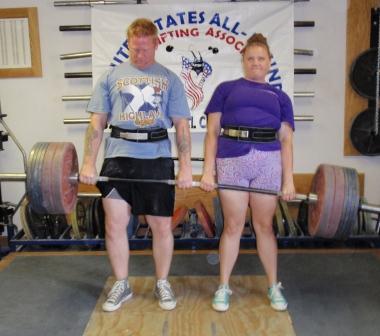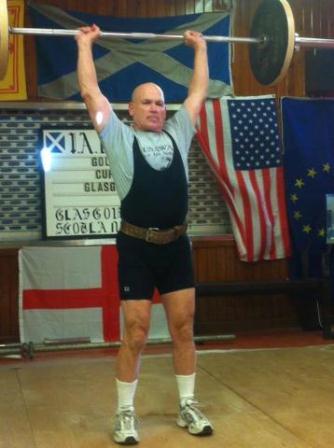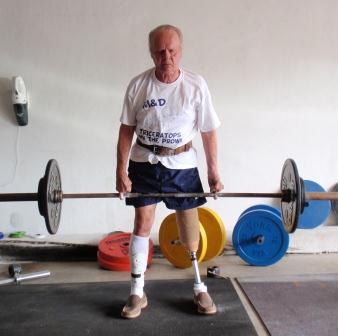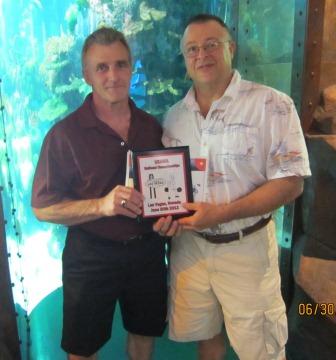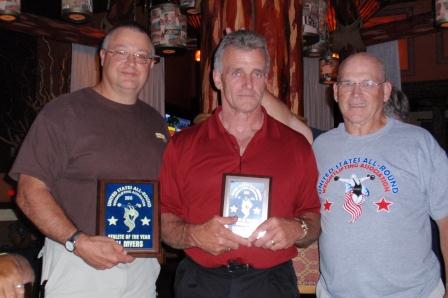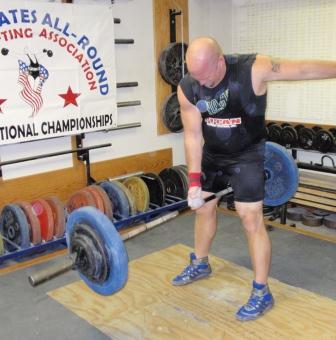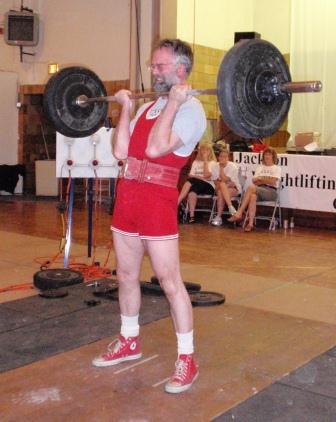Heavy Lifting and Your Joints
by Larry Traub
“You know Bill (Walton), it’s what you learn after you know it all that counts” – Johnny Wooden
I started lifting at age 18 and my competitive powerlifting career started at age 22 and ended at age 60. I had it all figured out. It was going to be my fountain of youth. I would be lean, muscular, strong, and athletic until I was 70, 80, who knows. I always felt I approached my lifting in an intelligent manner. An early decision to never use performance enhancing drugs seemed to be an intelligent choice that I never forsook.
This may be heresy to some, but I was more or less a disciple of Arthur Jones in that I minimized my time in the gym, but tried to make all of my training as intense and as heavy as possible. I felt that I practiced good form with smooth and controlled motions. Most of my training for the last 20 years of my career consisted of training 2 times a week and doing one or two heavy work sets for each exercise. This was usually about 3 hours of lifting per week, so I felt good about keeping my priorities straight and having time to be a husband, a father, a teacher, and a coach. I was avoiding over training. In my 40 plus years of training I never sustained any muscle, tendon, or ligament damage. At 5’9″ and in my mid 40’s, I could grab a ten foot basketball rim. This was not possible in college and didn’t occur until I started squatting. I was much more successful as a masters (over 40) lifter than I was as an open lifter. I felt I did the best lifting of my life when I was 44 at the USAPL masters nationals. I pulled a 700 deadlift and had a 1700 total in the 198 lb. weight class.
In the year 2015, the year I turned 62, I accomplished something that may be more impressive. I had total replacement of both hips, both shoulders, and my right knee. That’s a lot of aftermarket parts. When they cremate my remains someone needs to make a run to the recycling center. I’m thinking the sale of that high quality stainless steel ought to cover gas money and maybe a 12 pack of Bud Light. I had all of my joints done in one calendar year due to a very high deductible (buy one, get 4 free), but it turned out to be a very good choice and I would do it the same way again even if finances were not a factor. My everyday life is now pretty much pain free. My wife is tired of having me suddenly stop whatever I’m doing and announce that nothing hurts. I can’t remember the last time I took ibuprofen. (I know I just claimed to be drug free, but I must confess that vitamin I was an intricate part of my training.)
The recovery for each of my surgeries was quite easy, With the exception of the knee, I would say I had less pain 10 days after each surgery than I did before. With the knee, it was more like 3 weeks, but still relatively easy. I attribute this to the fact that I never really injured any of my joints and that they were still surrounded by a lot more muscle than the average person. I simply had degenerative arthritis. My joints were simply worn out.
I am quite pleased. My competitive powerlifting is over, but I am lifting again and I still hope to take a somewhat lean, muscular, strong, athletic, and scarred body into my old age. My training is much different. I must minimize the stress on my new joints if I want them to last the rest of my life. I am using a super slow movement which means I take 6 seconds to do a positive motion (raise the weight) and ten seconds to do the negative (lower the weight). This reduces the amount of weight I can use, but I still follow the progressive resistance principles I always used. I raise the weight every time I am able to complete the required number of reps. Currently, I am using 7 reps as my goal for all of my exercises and have made steady progress increasing weight.
I am using machines on almost all of my exercises, but I may eventually get back into some free weight exercise. I am training three days a week, do one set per exercise, and complete 10 to 12 exercises. I know there are limits to how far this will take me, but right now I feel that I am making significant progress in strength and muscle gain.
Now here’s the question. Would I do it all over again? I have few regrets considering how easy and relatively painless it was to get my joints replaced, but I would definitely do some things differently given 20/20 hindsight. My accomplishments, as a powerlifter, are important to me. I wouldn’t trade the enjoyment it gave me for an arthritic free body. The real question is whether or not I could have had similar or maybe even better results with an approach that would have been less detrimental to my joints. I think so!
The first thing I would do differently is to try and take my ego out of it. I really think all athletes are ego driven, but I had a compulsion to stay very close to my maximum muscle and strength levels year round even though I only competed once or twice a year. Maybe periodically, I should have taken some real time off. Perhaps I should have considered totally different rep schemes where I would increase the number of reps in order to minimize the weight for extended periods of time. I think that the super slow movements that I described earlier could have been incorporated into my off season and still allowed me to maintain the muscle mass that my ego required. Maybe it’s as simple as realizing that you must make adjustments as the years go by.
I would definitely search for some answers and I would encourage many of you who plan to take lifting into your later years to do the same.
P.S. I think the growing popularity of cross fit competitions and strongman contests may speed up the kind of deterioration that I experienced. The emphasis on the Olympic lifts and other explosive lifts would take more of a toll if consistently performed at very intense levels. The lack of good form I have witnessed in cross fit competitions would also be an area of concern.
